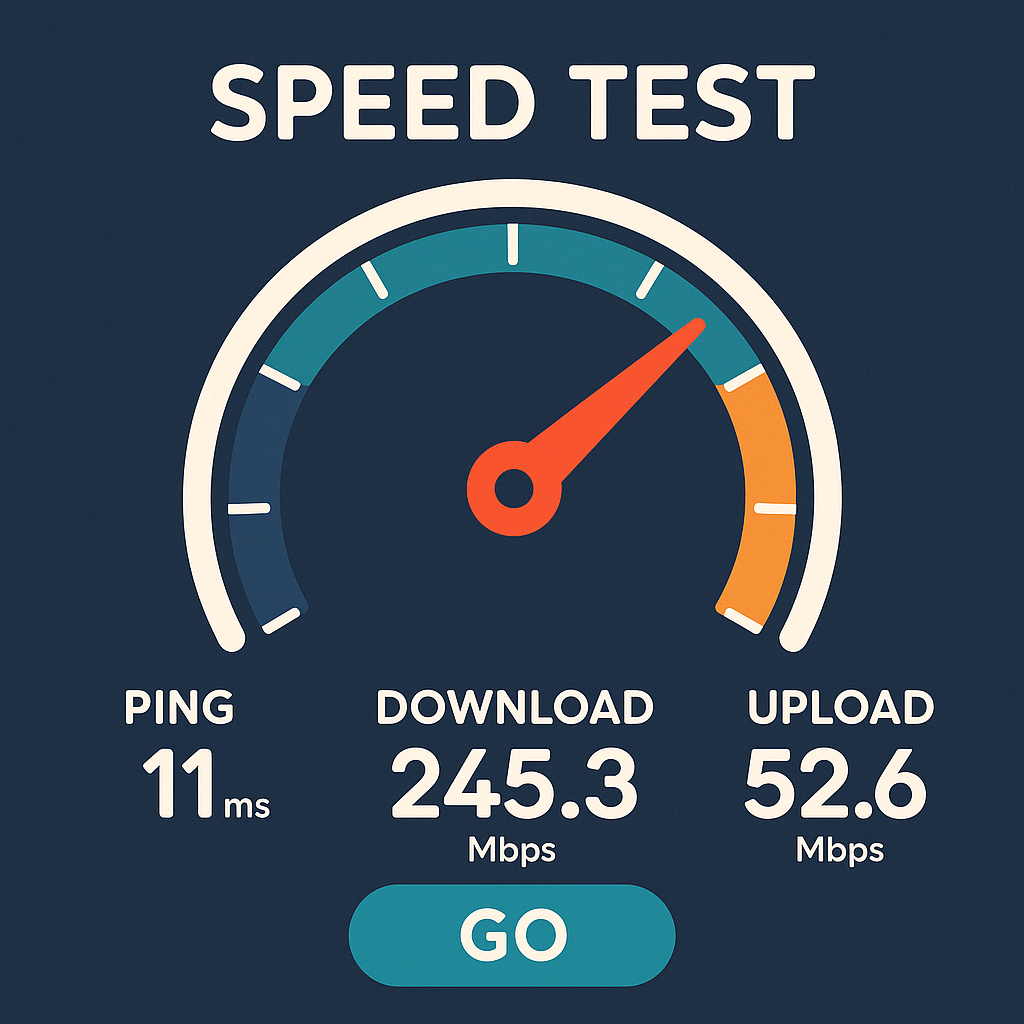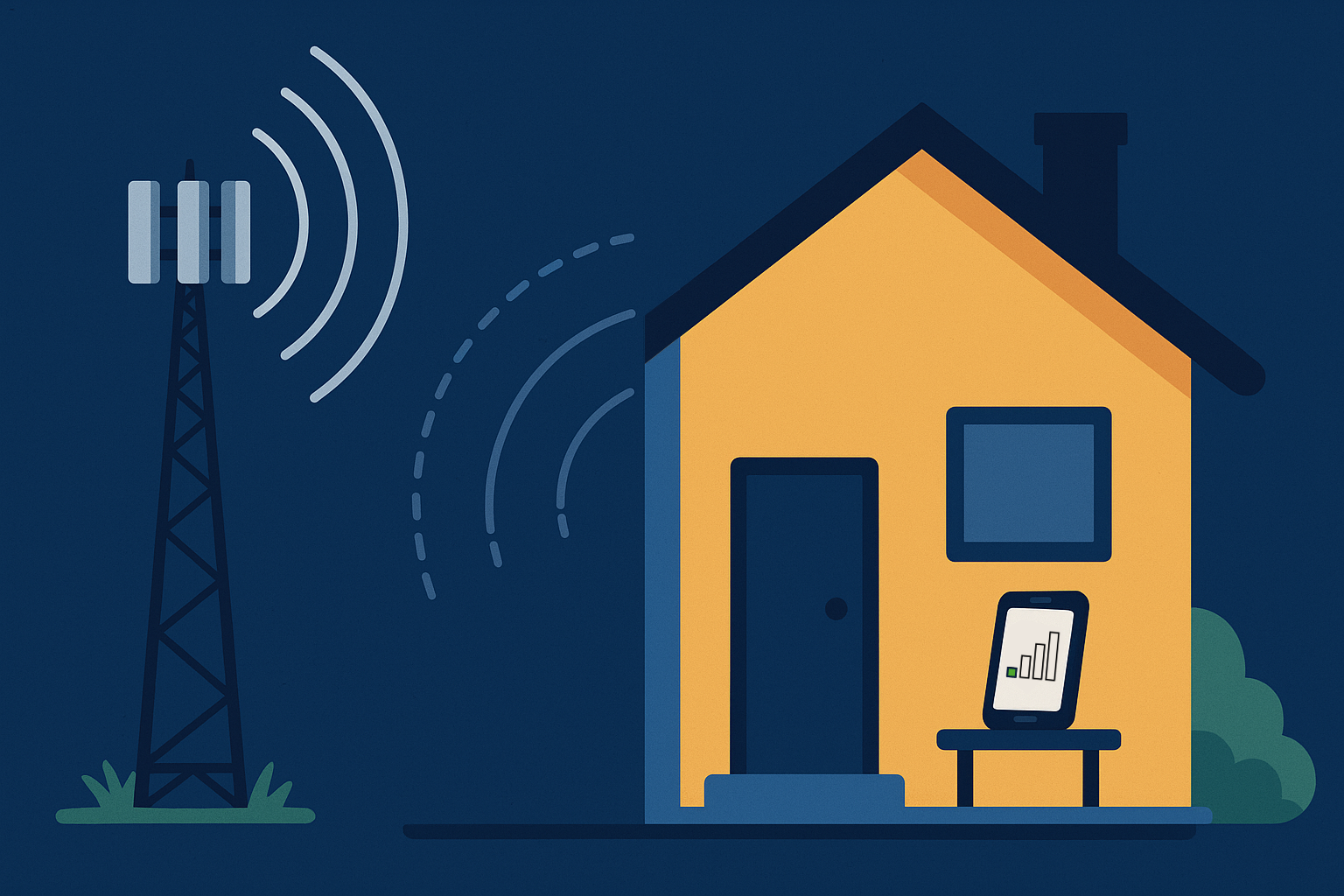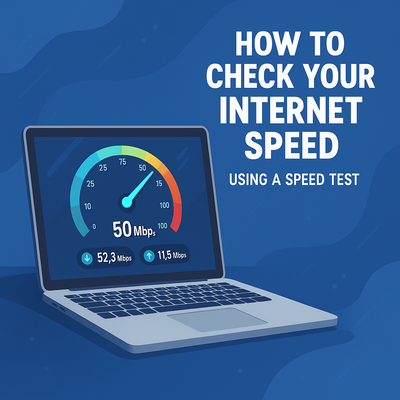How to Check Your Internet Speed Using a Speed Test and Boost Your Network
Posted by Gordon Reed on 2nd Jul 2025
Reliable and fast internet is no longer optional, it's essential for modern life and business. Whether you're managing remote work, running an IoT deployment, or just streaming 4K content at home, your network performance directly impacts your experience. But when things feel sluggish, how do you know where the problem lies? The first step is learning how to properly test your internet speed. Once you have that data, you can start improving and in many cases, an external antenna is one of the most effective upgrades you can make.
What Is Internet Speed, Really?
Internet speed is more than just a single number. It's a combination of several performance metrics that determine how fast and reliably you can send and receive data:
- Download Speed: The rate at which data is received from the internet (measured in Mbps). Critical for activities like streaming, browsing, or downloading files.
- Upload Speed: The rate at which data is sent to the internet. Essential for video calls, cloud backups, and file uploads.
- Ping (Latency): The time it takes for a data packet to travel to the server and back, measured in milliseconds (ms). Low latency is crucial for real-time applications like online gaming and VoIP.
- Jitter: The variation in ping over time. High jitter can cause buffering and dropouts during video calls or live streams.
Understanding these figures helps identify whether your internet issues are related to your ISP, network congestion, or signal quality.
Tools to Test Your Internet Connection
There are several trusted tools to help you run speed tests:
- Speedtest by Ookla: Widely used, with options to test specific servers and track historical results.
- Fast.com: A simple, fast-loading test powered by Netflix—great for evaluating streaming performance.
- Google Speed Test: Just search “speed test” in Google and run a built-in diagnostic at the top of the search results
- Router Diagnostic Pages: Many routers offer internal speed test tools to measure ISP throughput directly at the source.
Running tests on multiple platforms provides a more complete performance snapshot.

Best Practices for Testing Internet Speeds
For the most accurate results, consider the following:
- Run tests at various times throughout the day to account for peak-hour slowdowns
- Compare both Wi-Fi and Ethernet connections, if available
- Close any background apps or streaming services that may consume bandwidth
- Use multiple devices to rule out local hardware issues
- Conduct a speed test outside your home or building is especially important when using cellular internet. By testing outside, you can measure the raw signal strength available before it’s affected by structural interference. This helps you determine how much performance could be gained by installing an external antenna outside your home, RV, enclosure, or industrial site

Interpreting Your Results
Once you have your speed test results, here's how to make sense of them:
- 25 Mbps download is typically sufficient for HD streaming on one device
- 100+ Mbps download is ideal for homes with multiple users or devices
- Upload speeds of 5–10 Mbps are usually adequate for basic video conferencing
- Latency under 30 ms is good for gaming or VoIP
- High jitter (over 30 ms) may indicate congestion or interference
If your speeds are far below your plan's advertised rate—or if results vary dramatically depending on location, it may be time to evaluate signal strength and network hardware.
What’s Slowing You Down?
Several factors can limit internet performance:
- Internal obstructions: Thick walls, metal enclosures, and building materials block wireless signals
- RF interference: Competing wireless signals (microwaves, other routers) can cause degradation
- Distance from towers: For LTE/5G connections, your distance from the nearest cell tower directly impacts performance
- Poor antenna quality: Internal antennas in routers, hotspots, or gateways often have low gain and poor reception, especially in industrial or mobile use cases.
The common denominator? Signal quality. Even with the best service plan, poor signal reception will result in slow and unstable connectivity. That's where we come in. OEM or the e-waste antennas that come with devices aren't enough. It's time to upgrade! AntennaGear carries antennas for nearly every device, carrier, and band.
Why an External Antenna Makes a Difference
External antennas—especially those engineered for high gain, directional precision, or MIMO performance—can vastly improve your connection by:
- Capturing stronger signals outside the building, bypassing walls and interference
- Reducing latency and jitter by maintaining a more stable link with the nearest tower
- Enabling better throughput on 4G/5G and Wi-Fi networks
- Supporting advanced features like carrier aggregation, beamforming, and multiple spatial streams in modern routers
If you notice a dramatic speed difference between indoor and outdoor tests, it’s a clear sign that your setup could benefit from a properly installed external antenna.
Why Choose AntennaGear?
AntennaGear specializes in professionally engineered antenna solutions for today’s high-performance connectivity needs. Whether you're running a fixed location, mobile fleet, or industrial enclosure, our antennas are built to maximize RF signal strength, data throughput, and reliability. We offer:
- Customizable antennas for Cellular, Wi-Fi, GPS, and combination applications
- Ruggedized housings and field-proven designs for harsh environments
- In-house cable customization for clean, efficient installs
- Expert guidance to help you match the right antenna to your device and application
When raw performance matters, AntennaGear delivers.
The Takeaway
Testing your internet speed is the first step toward diagnosing and improving your connectivity. And if your tests show stronger signal outdoors than indoors, you're looking at one of the most common and correctable performance bottlenecks: poor signal reception. An external antenna from AntennaGear can bridge that gap, bringing in cleaner signals, reducing interference, and unlocking the full potential of your internet connection.
Explore our full line of high-performance antennas at AntennaGear.net.

